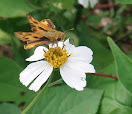Earth is entering a stream of dusty debris from Comet Swift-Tuttle, the source of the annual Perseid meteor shower. Although the shower won't peak until August 11th and 12th, the show is already getting underway. For sky watchers in North America, the watch begins after nightfall on August 11th and continues until sunrise on the 12th. Veteran observers suggest the following strategy: Unfold a blanket on a flat patch of ground. Lie down and look up. Perseids can appear in any part of the sky, their tails all pointing back to the shower's radiant in the constellation Perseus. Get away from city lights if you can.
Full story at Science at NASA:
http://science.nasa.gov/headlines/y2009/31jul_perseids2009.htm?list137366
UPDATE- Space Weather News for Aug. 4, 2009
http://spaceweather.com/
POSSIBLE PERSEID METEOR OUTBURST: This year's Perseid meteor shower could be even better than usual. According to NASA's Meteoroid Environment Office, a filament of comet dust has drifted across Earth's path and when Earth passes through it, sometime between 0800 and 0900 UT (1 - 2 am PDT) on August 12th, the Perseid meteor rate could surge to twice its normal value. Check http://spaceweather.com/ for details and observing tips.
UPDATE: August 11, 2009
The Perseid meteor shower is about to peak. The show begins after sunset on Tuesday, August 11th, and continues until the sun rises on Wednesday, August 12th. A time of particular interest is 0800-0900 GMT (1-2 a.m. PDT) on the 12th. That's when Earth is expected to pass through a denser-than-usual filament of dust from Perseid parent Comet Swift-Tuttle. Forecasters are unsure what will happen, but some have speculated that meteor rates could surge as high as 200 per hour. Bright moonlight will blot out many of those Perseids, but even a fraction of 200 is a good show.
Visit http://spaceweather.com for full coverage of the Perseids.
Friday, July 31, 2009
Subscribe to:
Post Comments (Atom)

No comments:
Post a Comment
Please keep comments on subject- Thanks!